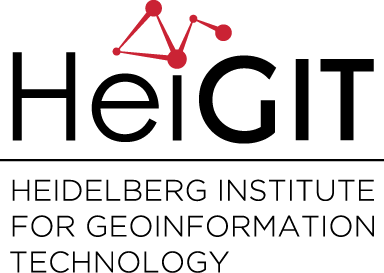Category: Lidar Group
-
Workshop zu “3D-Geländemethoden in den Geowissenschaften” (15.-16.3.2018 in Heidelberg)
Die 3D-Initiative in den Geowissenschaften organisiert einen Workshop zu “3D-Geländemethoden in den Geowissenschaften” (14-16. März in Heidelberg) mit speziellem Fokus auf Workflows. Der Workshop wird von der Geoinformatik Heidelberg mitorganisiert. Willkommen sind alle Interessierten an 3D und Geo: ForscherInnen, Studis, PraktikerInnen, usw.. Eine kostenfreie Anmeldung ist aus organisatorischen Gründen zwingend nötig. Weitere Infos finden Sie…
-
Abstract submission to EGU 2018 – 3D Point Clouds in Geosciences: Capturing, Analysis and Visualization (Deadline 10 Jan 2018)
Short abstract submission for the EGU General Assembly in Vienna 8–13 April 2018 is still open until 10 January 2018 (13:00 CET). We organize a session with special focus on 3D Point Clouds in Geosciences: Capturing, Analysis and Visualization. We would be very happy to receive your research and promote it in this special EGU…
-
Merry Christmas by GIScience Heidelberg
The GIScience Research Group with the 3D Geospatial Data Processing Group and the team at HeiGIT (Heidelberg Institute for Geoinformation Technology) at Heidelberg University do wish a peaceful Christmas time and all the best for a successful and prosperous new year 2018 to all of you!
-
Auto3Dscapes Makes Environmental Monitoring Smarter
… by acquiring data only when and where changes occur. In this project on Autonomous 3D Earth Observation of Dynamic Landscapes (Auto3Dscapes), a novel strategy of permanent 3D observation will be developed incorporating observed topographic changes as feedback and dynamically adapting the acquisition parameters and analysis methods. Permanent 3D Earth observation is currently challenged by…
-
Digital Geoarchaeology: New Techniques for Interdisciplinary Human-Environmental Research
Digital Geoarchaeology can be regarded as an intersection of disciplines that contributes to the consolidation of different academic perspectives. It represents a novel approach in terms of computer scientific methods combined with geoscientific know-how and archaeological expertise to multi-methodically investigate past human-environmental relationships (Siart et al. 2018). In the new textbook “Digital Geoarchaeology” by Springer,…
-
New Main Research Group “3D Geospatial Data Processing” at Interdisciplinary Center for Scientific Computing (IWR)
The Interdisciplinary Center for Scientific Computing (IWR) at Heidelberg University is a leading institution in research and education in scientific computing in a multitude of interdisciplinary topics – covering science, engineering and humanities. Computational methods are a very important foundation in GIScience / Geoinformatics with particular focus on the investigation of geospatial data and geospatial…
-
Cover Story of ISPRS International Journal of Geo-Information
Not undercover but on the cover: We were selected as cover story of the ISPRS International Journal of Geo-Information, Volume 6, Issue 11. In our research on “Historic Low Wall Detection via Topographic Parameter Images Derived from Fine-Resolution DEM“, we apply rapid landscape line detection to extract historic vegetable garden walls based on topographic information…
-
Mobile low-cost 3D camera maize crop height measurements under field conditions
Maps of the spatial distribution of crop heights can strongly support agriculture in terms of efficiency and yield optimization. Recently published results of experiments of the 3D Spatial Data Processing research group describe an approach to easily extend regular agricultural machines with low-cost sensors for capturing crop heights while the machine is in the field.…
-
GIScience welcomes New Master Students
Yesterday, GIScience Heidelberg was welcoming our new master students. After a general introduction into our teaching philosophy, our core courses and our institutes (HeiGIT, HCE, IWR), we were giving insights into the specialization in GIScience/Geoinformatics, which is possible in the Geography Master Programme. As our teaching is research-based and research-oriented we were presenting most recent…
-
3D geodata acquisition in the Siberian Arctic
In September 2017, the 3D Spatial Data Processing Group (3DGeo) joined the German-Russian expedition of the Alfred Wegener Institute (AWI) for Polar and Marine Research to the Arctic research station Samoylov (N 72°22’, E 126°29’) in the central Lena Delta. Under the lead of Julia Boike, the research team maintained and expanded long-term monitoring stations…
-
LiDAR meets Art
An interesting 3D art project using point clouds of the 3D Spatial Data Processing research group of Prof. Bernhard Höfle (3DGeo) was recently realized by artist Gerrit Frohne-Brinkmann. The data were acquired from natural karst cave features in the Dechen Cave near Iserlohn, Germany both with a low-cost Kinect sensor and terrestrial LiDAR. For the…
-
Call for papers – PFGK18 : Photogrammetrie – Fernerkundung – Geoinformatik – Kartographie – 2018
Feel free to submit papers to our DGPF Working Group on Geoinformatics (Prof. Haunert, Prof. Höfle). Important dates for submission can be found here: http://www.pf.bgu.tum.de/pfgk18/pfgk18_dat.html Deadline for regular papers is 31 October 2017!


